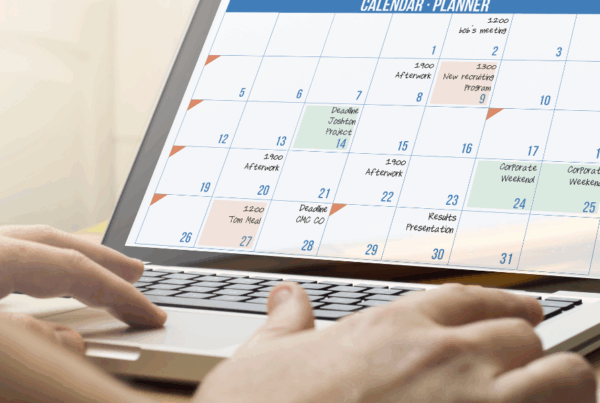By Nigel Oseland, Toastmasters International
I simply love going to conferences! Dare I say I’m a conference junkie? I attend and speak at around 10 conferences each year. The conferences I go to are usually academic or technical in nature where the speakers present their latest research, ideas and innovations.
Technical talks can be some of the most challenging to deliver; there’s important information to get across, that in itself may not be very ‘sexy’ and yet the audience needs to hear it and absorb it – without falling asleep part-way through!
Having attended 100s of conferences over the years I’ve concluded that, generally, there are two types of technical speaker: 1. those with fantastic content but have poor delivery, and 2. those that present well but have poor content.
Speakers with good content who can also communicate it in an interesting and engaging manner are the unicorns of the conference circuit; rare and magical beasts. It always seems a shame to me that the years of hard graft conducting original and valuable research is ultimately lost amidst a poorly constructed and delivered presentation.
So here are my top tips for a terrific technical talk.
- Start with a bang – Conferences especially can be quite busy with delegates moving between sessions or discussing previous speakers. So, hook your audience from the start and grab their attention; make them want to stay and listen.
Try opening your presentation with a provocative statement (ideally relating to your research or the conference theme), or perhaps pose a question to the audience, or offer an amusing anecdote. Above all, be confident, be bold, be passionate and be audible – project your voice to attract attention, don’t mumble or apologise or make some private joke that only a few understand.
Remember to introduce yourself, your credentials, and your interests/purpose. Quite often the audience does not catch the introduction by the chair or, at larger conferences they confuse speakers and their subject, so display your contact details on screen (at the start and end of your speech).
Also, briefly introduce your fellow researchers and department, without overtly boasting or making it a sales pitch. Use the first minute to share your passion and personality to gain the audience’s trust.
Psychologists have demonstrated the “serial position effect” in which people tend to recall better the first and last things they hear. So, also end on a high. Let the audience know you have finished by summing up, finishing with a poignant quote or leaving them with a call to action. Practice your speech and specifically practice your opening and closing.
- Stand out from the crowd – Most technical conferences will have at least 10 and, if parallel sessions, possibly 30 or more speakers on one day. After lunch and towards the end of the day, the audience will be flagging. The opening to your speech will attract their attention but to maintain it you will need to be engaging and possibly entertaining.
Inject energy through your passion for the subject, consider your vocal variety; changing the volume and pitch. Humour will also help keep your audience engaged – but only offer amusing anecdotes or observations relevant to your topic, not random jokes. Likewise, offer strong opinions and the occasional provocative comment, rather than play safe and sit on the fence.
Also, don’t hide behind the lectern but come forward and use the stage area. Consider your body language, eye contact and movement across the stage which can all help with audience engagement. If you are confident, and have time, then ask questions of the audience or perhaps ask them to discuss an issue in pairs or even complete a short task/puzzle/quiz.
- Pitch it right – Know your audience by finding out more about participants from the conference website or organisers. This will enable you to pitch the right level of technical detail and understanding – not too little that you lose credibility but not too much so that you lose the audience or appear arrogant.
When presenting data, don’t get too bogged down by all the details and caveats – you can offer more details in the question and answer period or refer people to your paper, book, website or blog.
Offer your personal insights on the research and your personal experience. Try and say something new that is not already in the paper, as the delegates may have already read the paper, or the research may have moved on (some conferences require papers submitted 12 months ahead of the event).
Refer to previous speakers and links between your research and theirs – don’t present your work in isolation.
- Present it perfect – In my opinion there are two main speaker crimes at technical conferences:
- An over-use and over-reliance on tables and charts. Speakers sometimes present figures that cannot easily be read, I often hear speakers say “you can’t read this table but …” – no buts; don’t show it or show the relevant part only.
Often the charts are complicated but, due to lack of time, the speaker doesn’t explain the axis or the data points and the information is lost. Similarly, avoid slides and slides of bullet points. Try to simplify your slides, present the relevant material to your point, and always leave the audience wanting more
2. Don’t turn your back to
But the worst crime is presenters reading their speeches, or worse reading their papers. This is no fun for anyone, and certainly not interesting or engaging. I appreciate for some presenters, English (or the conference language) will be their second language – if so then the answer is to practise more. Audiences do not like being read to and would prefer to read the paper by themselves. It also indicates lack of practice which may be interpreted as lack of respect for the conference participants.
Likewise, do not read your slides, especially bullet points. Some of us find it insulting as people can usually read quicker than someone can speak and if we read the slides then what is the point of the presenter being there! If you do use bullet points, then attempt to make each one a memorable phrase or a soundbite. The audience may include the press or Twitter users who are looking for choice phrases to broadcast beyond the conference.
- Set it up – Quite often speakers turn up minutes before their presentation. Consequently, they may not know how to use the audio-visual technology and they spend their all-important opening asking the chair or the AV technician how to advance slides. You will also miss out on being fitted with a lapel mic and so be tethered to the lectern.
Arrive a little early and speak to the technician and the chair. Ideally you will have confirmed the timing in advance of the conference but double-check with the chair as programmes change/slip. Remember to leave time for questions and establish whether that is within or outside your time allowance. It is always worthwhile giving the chair, in advance, a question to ask you; audiences usually require a question before warming up and it can be embarrassing if the chair wraps up before a question is asked. Also provide the chair with some interesting information they can use in an introduction – many will simply read your official bio, so offer them a hook.
There’s an old speakers’ adage; “it’s not what you say but what the audience remembers that counts”. Practice the above pointers to gain confidence in speaking and ensure your audience enjoys and remembers you, your presentation and your research.
About the Author

Nigel Oseland is a member of Toastmasters International, a not-for-profit organisation that has provided communication and leadership skills since 1924 through a worldwide network of clubs. There are more than 400 clubs and 10,000 members in the UK and Ireland. Members follow a structured educational programme to gain skills and confidence in public and impromptu speaking, chairing meetings and time management. To find your nearest club, visit www.toastmasters.org








